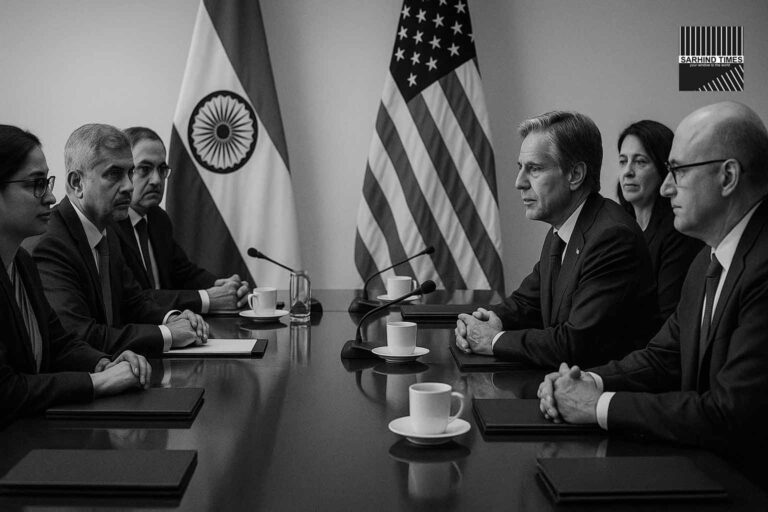Philippe, Kuhnemann Brought In as Replacements
By Sarhind Times Staff Reporter
In a late setback to Australia’s plans, wicketkeeper Josh Inglis and leg-spinner Adam Zampa have been ruled out of the forthcoming first ODI against India, scheduled for Sunday at Perth Stadium. Cricket Australia confirmed the dual absences on Tuesday, citing a calf strain for Inglis and family reasons for Zampa.
The replacements are keeper-batter Josh Philippe and left-arm spinner Matt Kuhnemann, both drafted into the squad to shore up Australia’s balance in the absence of their more established teammates.
This twist imposes fresh dilemmas on Australian selectors, already juggling white-ball workloads ahead of a crowded international calendar. For India, the changes open up new possible match-ups in the powerplay, middle overs, and spin battle.
The Injuries, the Call-Ups, and What It Means
Inglis Out, Zampa Absent
Josh Inglis had sustained a calf strain earlier this month, and has not fully recovered in time for the Perth match. The delay in his rehabilitation leaves the Australian team with no choice but to look elsewhere behind the stumps for the series opener.
Adam Zampa, who has been a mainstay of Australia’s spin attack in ODIs, is unavailable for the first match for personal/family reasons. Reports indicate that his absence is limited to this game, and he is expected to rejoin the squad later in the series.
Meanwhile, Alex Carey — who was the other wicketkeeper option in the original squad — has been released to play in a Sheffield Shield match in South Australia as part of his preparations ahead of the Test season (especially the Ashes) rather than join the squad in Perth.
Australia is hopeful that Inglis might recover in time for the third ODI in Sydney (October 25). Carey, too, is slated to rejoin from the second match in Adelaide.
Philippe and Kuhnemann Called In
To plug the gaps, selectors have brought in Josh Philippe and Matt Kuhnemann. Philippe, a wicketkeeper-batting option, will don the gloves in the first match. Kuhnemann, meanwhile, will slot in as spin cover.
Josh Philippe last played an ODI in 2021. His recent domestic and “A-team” form has strengthened his case; in particular, he produced a 123* and 50 in recent Australia A games on India soil, and has also posted strong numbers in domestic one-day cricket.
Matt Kuhnemann has had limited ODI exposure, having last featured in a 50-over match in 2022. But given the absence of Zampa, he becomes the likely go-to for spin duty, especially in conditions that may demand variation.
Selectors will also keep other spin/all-rounder options in mind (such as Matthew Short or Cooper Connolly) as the series unfolds.
Strategic Implications & Match Dynamics
Rebalancing the Side
Losing Inglis and Zampa forces Australia to rethink their classic balance: the combination of a specialist keeper, frontline spinner, and depth in batting and spin support. With Philippe stepping in behind the stumps, the team will expect him to double up as a lower-order bat if needed.
In the spin department, Kuhnemann’s selection demands a readjustment: he is a left-arm orthodox option, unlike Zampa’s leg spin. That pivot may alter which Irish batsmen (India’s) he is matched up against. India might adjust their batting order or approach in anticipation.
Australia’s fast bowling remains unaffected, but their spin bowling reserve is thinner now. The onus will fall on Kuhnemann to deliver control and variation, and perhaps to bowl in phases where a leggie like Zampa would typically be used.
India’s Counter Moves
From India’s perspective, the altered Australian configuration offers new possibilities. In the powerplay, without Zampa’s early overs, India might aim to press harder against seamers or think about sending batters who handle pace and bounce well.
In the middle overs, the spin battle is slightly modified: matchups against Kuhnemann (left-arm) may allow Indian right-handers more freedom, but left-handers might be targeted. India could also manipulate their rotation to test Kuhnemann’s adaptability under pressure.
The pitch at Perth often offers bounce and carry early, though may flatten out in the middle. If there is any surprise in movement or grip, that could benefit spinners who can extract turn or flight. The uncertainty regarding spin matchups may prompt India to reconsider how deep they go in their batting or how they stage their partnerships.
Psychological and Squad Depth Angle
The absence of senior names can create pressure. Philippe and Kuhnemann, though capable, will face scrutiny early. But this also reveals Australia’s bench strength — the ability to call on competent replacements under duress. For India, disrupting the opposition’s rhythm by forcing less familiar players under the spotlight is a subtle strategy.
Given that this ODI series comes ahead of a heavier schedule later in the season, including Test/white-ball engagements, both teams will be mindful of workload management. Hence, even future matches may see more rotation in roles and responsibilities.
Series Narrative & Broader Context
This series — Australia vs India — is not only a marquee contest in its own right, but also an essential tune-up opportunity for both sides as they approach a dense international calendar, including bilateral and ICC events.
Historically, matches between Australia and India carry intense rivalry, dramatic contests, and strong fan engagement. The drama is heightened when key players are absent or shaken up — pushing both teams to adapt tactically.
The broadcasters already anticipate strong ratings and high spectator interest, given India’s formidable home form and Australia’s depth even in adversity.
In the bigger picture, the series gives both teams a chance to test combinations, manage squad rotations, and assess readiness, especially ahead of the Ashes preparations (for Australia) and India’s busy season.
For Australia, preserving their top players for the Test commitments, yet remaining competitive in white-ball formats, will be a fine balancing act. For India, capitalizing on any instability in the opposition will be key.
If Inglis returns later in the series, or Zampa rejoins, Australia may regain some tactical flexibility; until then, Philippe and Kuhnemann must step up.
As the Perth match approaches, weather, pitch, toss, and early execution will matter more than ever. It’s a fresh curveball in the narrative of a high-stakes rivalry.
Preview: First ODI Outlook
| Aspect | India | Australia (with changes) | Key Battle |
| Batting | Deep order, comfortable with pace & spin | Strong top order, responsibility on Philippe for lower order | Indian top order vs Australian pace + spin |
| Spin | Will likely use wrist/spin variations | Kuhnemann will be tested — may lack deception of Zampa | Matchups vs right- & left-handers |
| Fielding / keeping | Consistent | Philippe under pressure behind the stumps | Keeping catches and chances critical |
| Strategy | Exploit weaker spin spells | Use pace upfront, restrict scoring before spin overs | Tight overs in middle phase to tilt momentum |
The toss outcome may have notable influence — choosing to bat may test depth; choosing to bowl may pressure India early.
If Philippe starts slow or misses chances, it may tilt momentum. If Kuhnemann can deliver tight lines and extract bounce, he may nullify India’s spin attack.
India will look to disrupt through early aggression and avoid being pinned down in the 30–40 over phase. The absence of Zampa in the initial spinning plans may force Australia to change plan mid-match.
Looking Ahead
While the immediate concern is the Perth ODI, a few broader takeaways are emerging:
- Australia’s ability to absorb injury disruptions will be tested.
- Player form, confidence, and adaptability will matter more than pedigree in this series.
- India must balance aggression with patience, especially if momentum swings in Australia’s favour.
- The series will be closely watched by selectors, media, and fans alike — as a barometer of depth, temperament, and strategy in both camps.
If Inglis returns in the third game, it may justify the initial risk of fielding Philippe. If Zampa rejoins for subsequent ODIs, the spin balance might stabilize. But what matters most is how well these newer call-ups perform under pressure early.
In sum, this change is not merely a substitution — it’s a shift in the chessboard of tactics, risk, and opportunity in a classic rivalry renewal.
#INDvAUS #Cricket #ODI #JoshInglis #AdamZampa #JoshPhilippe #MattKuhnemann #TeamAustralia #TeamIndia






















+ There are no comments
Add yours